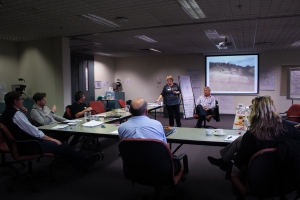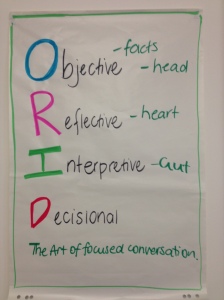Understanding Farm Advisory Boards
by Danielle England, AgInnovate, and Jeanette Long, Ag Consulting Co
What are Farm Advisory Boards?
A farm advisory board is a group of six to eight people who get together regularly to help manage a farm business. It is generally made-up of members of the family plus one or two of their key, trusted advisors.
Farm Advisory Boards provide a structured process for farm families to discuss key business management decisions such as finance, land purchase or leasing opportunities and machinery replacement, just to name a few.
Advisory Boards are different to Boards of Management (required for company structures). In an Advisory Board, members are there to provide ‘advice’ only, and it is up to the business partners/legal owners to make the final decision. This provides some level of comfort for farm family members, as all the final decisions still remain the responsibility of the farm business owners.
How often do they meet?
Farm Advisory Boards will meet three to four times throughout the year to discuss the strategic management of a business. The timings of these meetings will depend upon the availability of board members and farm operations. (For example you don’t want to schedule them right in the middle of seeding!)
What might a Farm Advisory Board discuss?
Agendas for farm advisory board meetings are set by the chair in cooperation with the farming family, and should be circulated to all advisory board members at least one week prior to a meeting.
Key reports should also be circulated to farm advisory board members at this time. Each farming business will be different, but the reports may include:
- Minutes/notes from the last meeting
- Operational reports (cropping and livestock)
- Financial reports (benchmarking, actual to budget reports)
- Special reports on strategic opportunities or threats to the business
How do I know if I need a farm advisory board?
Farm Advisory Board meetings provide the business with a dedicated forum where time is spent discussing the business in a structured way.
If you find that you
- do not have any spare time because you are too busy doing operational ‘stuff’,
- have the next generation entering the business,
- are not spending the time to consider the future direction of your business and family, or
- if you are not adequately meeting the legal responsibilities of the business, then a farm advisory board may be the answer.
What are the advantages to establishing a farm advisory board?
Farm Advisory Board meetings provide farm business partners with the rigor and time to strategically review the direction of their business, and time to prioritise the key tasks for the business, outside operational deadlines.
They provide an opportunity for all members of the farm business to have a say in a formal environment, on key strategic decisions for the business. They also provide a place for the next generation to learn the ‘business side’ of the farm, with the full support of the older generation and their trusted advisors.
Boards of management are key risk management tools for many businesses outside of agriculture. Boards, advisory or management, mean that more than one person knows the direction and operation of the business, and there are processes and plans in place to ensure business continuance should something happen to key family members.
What are the disadvantages to establishing a farm advisory board?
Often as sole operators, the thought of sharing the decision making in a family farming business is uncomfortable. This is perceived to be one of the biggest disadvantages in a family business, but once in operation, most farm families with boards, believe this is one of its greatest advantages.
It is often the time pressures on collecting the relevant information and hosting a board meeting that is the hardest issue for businesses with farm advisory boards. If you are committed to the process, then the benefits of creating these reports, and spending the time, far outweigh the hassles.
Do I need to pay the independent advisory board member?
Yes. Most professionals will charge their normal daily rate for preparation and meeting time. Meeting expenses, such as board room hire, independent board member travel, morning and afternoon tea costs, should be met by the farm business.
For more information contact:
Danielle England Narrogin WA 0429 676077 danielle@aginnovate.com.au
Jeanette Long Ardrossan SA 0438 373993 jeanette@agconsulting.com.au








